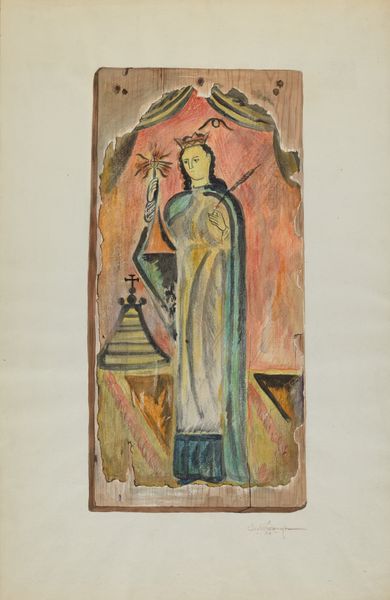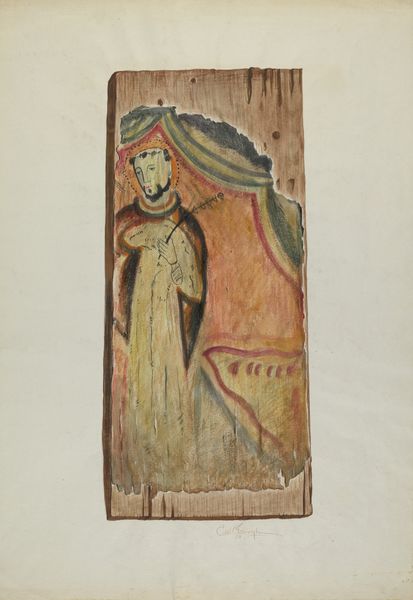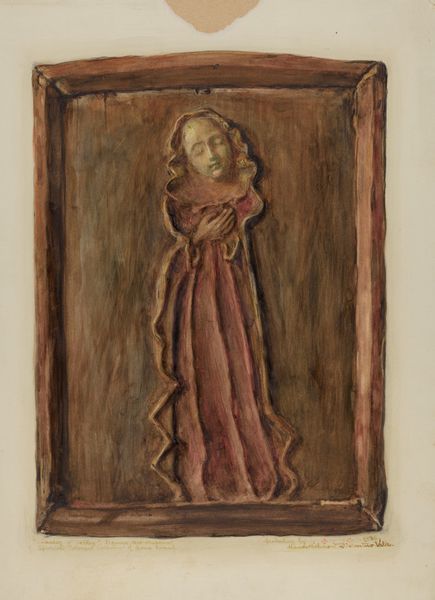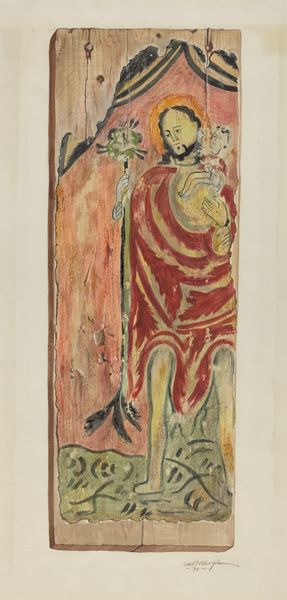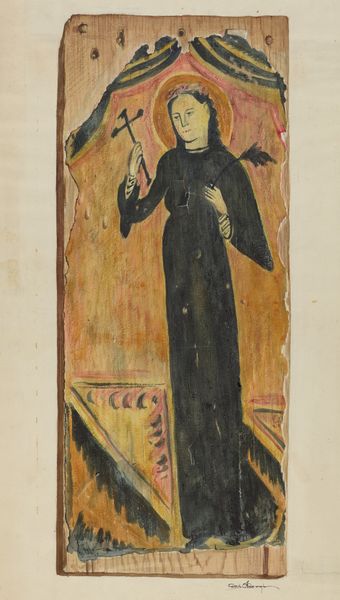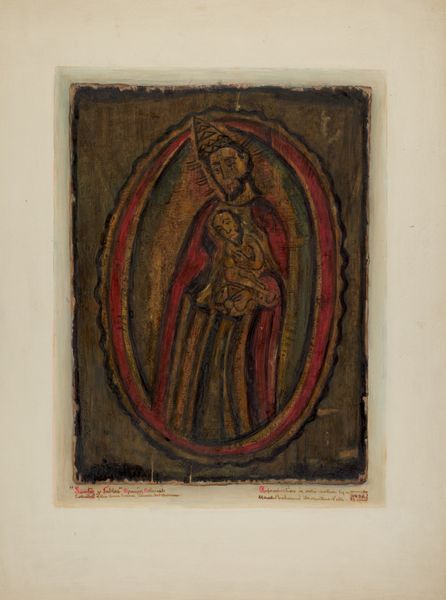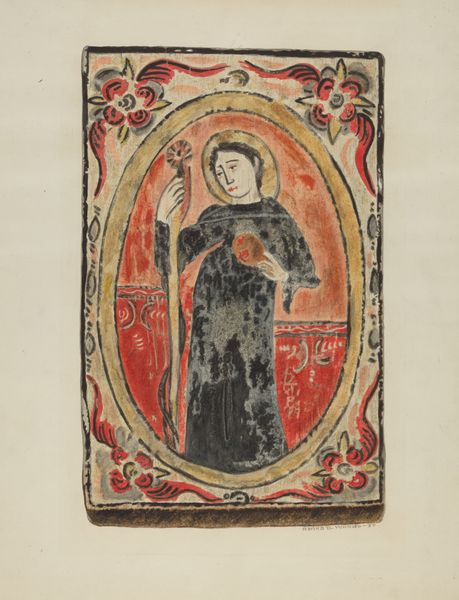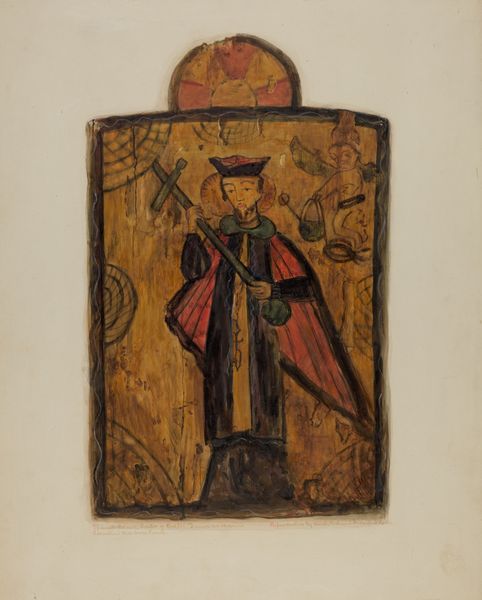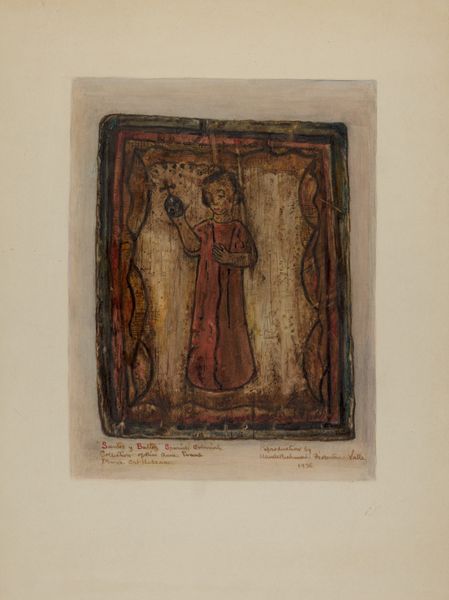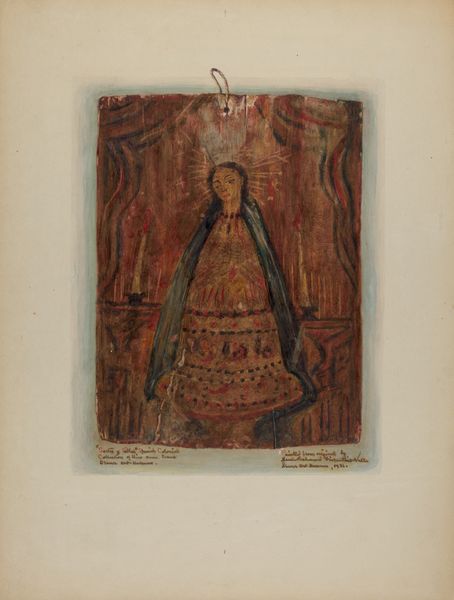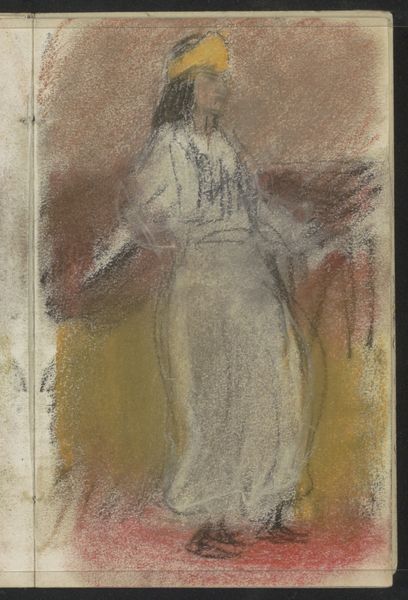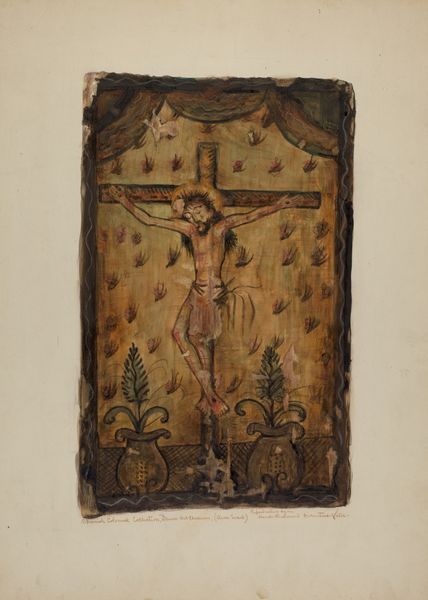
drawing, painting, fresco, watercolor, wood
#
portrait
#
drawing
#
water colours
#
painting
#
indigenism
#
fresco
#
oil painting
#
watercolor
#
coloured pencil
#
folk-art
#
wood
Dimensions: overall: 53.2 x 35 cm (20 15/16 x 13 3/4 in.) Original IAD Object: 26 1/4"high; 10 1/2"wide
Copyright: National Gallery of Art: CC0 1.0
Curator: Here we have Carl O’Bergh’s "Santo (Lady of Guadalupe)" from 1939. What are your initial thoughts? Editor: Stark and a bit raw. The palette feels earthy, muted, and yet there’s a quiet reverence conveyed by the upward gaze and clasped hands. Curator: Indeed. O'Bergh’s choice of materials – watercolor and coloured pencil on wood – is intriguing. It challenges conventional fine art by using modest, accessible media often associated with folk art practices. Editor: The wood support, in particular, really strikes me. It has its own distinct texture and irregularities that contrast with the soft hues and blends of watercolour and pencil. You'll notice the halo that surrounds the lady's head seems integrated to the board as much as it emanates from the portrait, doesn't it? Curator: Precisely! It emphasizes the labor involved, the selection and preparation of this particular material. Was the artist influenced by folk devotional art, with its history of making the divine accessible and local? The materiality here speaks volumes about access, resourcefulness, and cultural context. Editor: Yet, there is something so composed about her image, so harmonious despite its modest origin. O’Bergh used shading to define her body in such a subtle, detailed, but elegant way that balances and elevate what might have looked like just folk art. I think the artist consciously decided that, formally speaking, these contrasts in textures and colours served its aesthetic effect. Curator: So, you believe he has an intrinsic vision, one focused on a specific art tradition? It brings up a key point, doesn’t it? Can we separate formal composition from the economic and social dimensions inherent in O'Bergh's choice of support and tools? Editor: The way he played with color, texture, and form, however simple they may look like, feels inseparable from the overall artwork aesthetic impact. I understand your focus on labor and resources as context but find difficult not to get caught up by this face expression, that gentle light! Curator: It is powerful. O'Bergh uses simple materials to invoke this emotional depth. Thank you, that helps underscore just how many different layers are woven into this singular portrait of the Lady of Guadalupe. Editor: Absolutely, and what an interesting journey to consider it together!
Comments
No comments
Be the first to comment and join the conversation on the ultimate creative platform.
